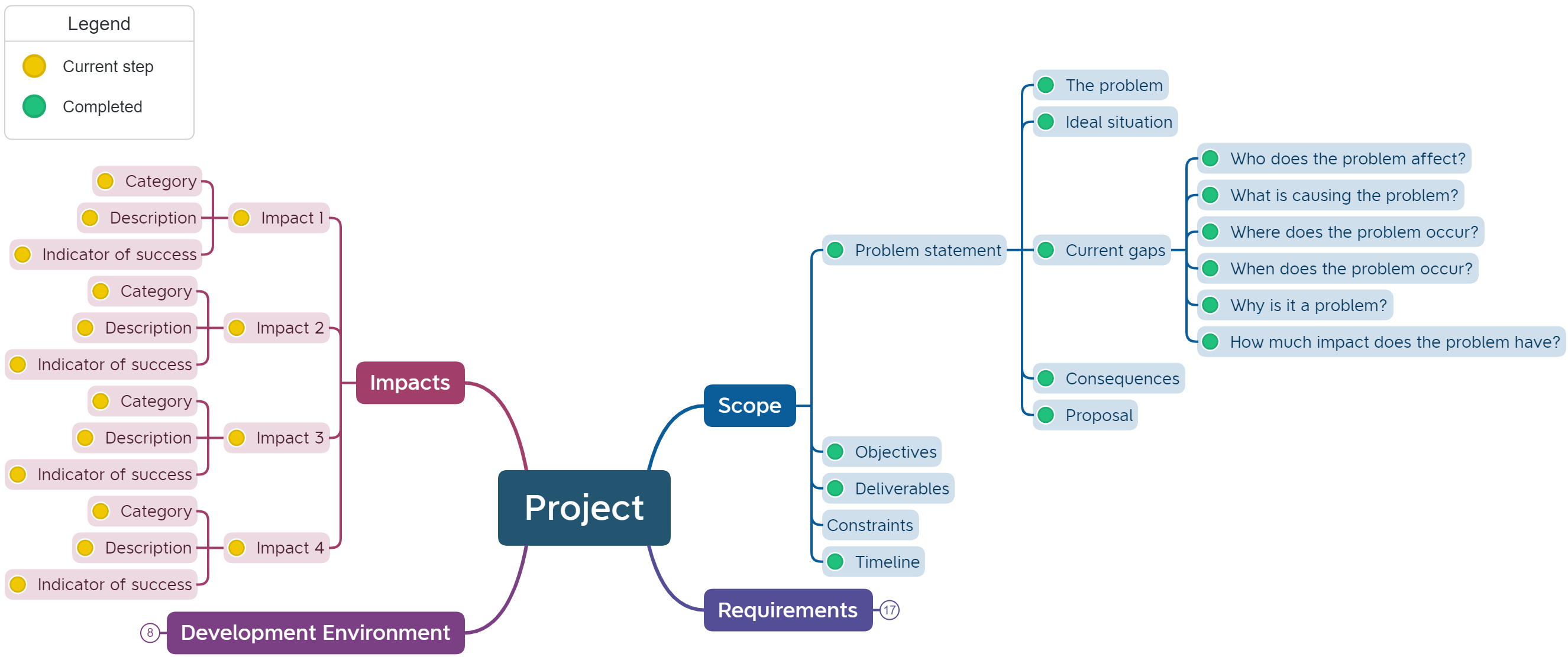Select Impacts
Contents
Select Impacts#
Tools used:
mind maps
For Unit 1#
When selecting impacts the developer needs to consider what they hope to achieve with the solution.
The types of impacts you can consider:
Personal Impacts
Health and wellbeing
Access to resources, services and opportunities
Quality of life
Personal safety
Resilience
Culture and heritage
Social Impacts
Health and wellbeing
Access to resources, services and opportunities
Quality of life
Safety
Security
Resilience
Culture and heritage
Innovation and human capital
Social cohesion
Economic Impacts
National economic performance
Trade and competitiveness
Productivity and efficiency
Management of risk and uncertainty
Policies and programs
New services, products, experiences and market niches
Animal health and prosperity
Securing and protecting existing markets
Environmental Impacts
Air quality
Ecosystem health and integrity (natural capital)
Climate
Natural hazards mitigation
Energy generation and consumption
Land quality
Aquatic environments
Built environments
This decision is recorded in the mind map.

For Units 2 to 4#
In addition to the impacts from Unit 1, you can also consider the impacts that result from the use of data.
Consider impact resulting from:
Transparency, accountability and empowerment of users
Business opportunities including for data intermediaries and start-ups
Co-operation and competition across sectors and countries
Crowdsourcing new insights and user-driven innovation
Increased efficiency across society through data linkage and integration
These impacts will still be recorded within the categories of personal, social, economic and environmental on the mind map.
Unit 1 subject matter covered:
understand and describe personal, social and economic impacts [QCAA, 2017]
Unit 2 subject matter covered:
explore and communicate the personal, social and economic impacts of storing data in a database for individuals, organisations and governments
recognise the elements needed for a data-driven solution, including the personal, social and economic impacts of storing data in databases for individuals, organisations and governments [QCAA, 2017]
Unit 3 subject matter covered:
determine possible personal, social and economic impacts [QCAA, 2017]
Unit 4 subject matter covered:
evaluate security impacts of data and its use, dissemination, storage, accuracy and ownership on personal, social and economic needs [QCAA, 2017]
